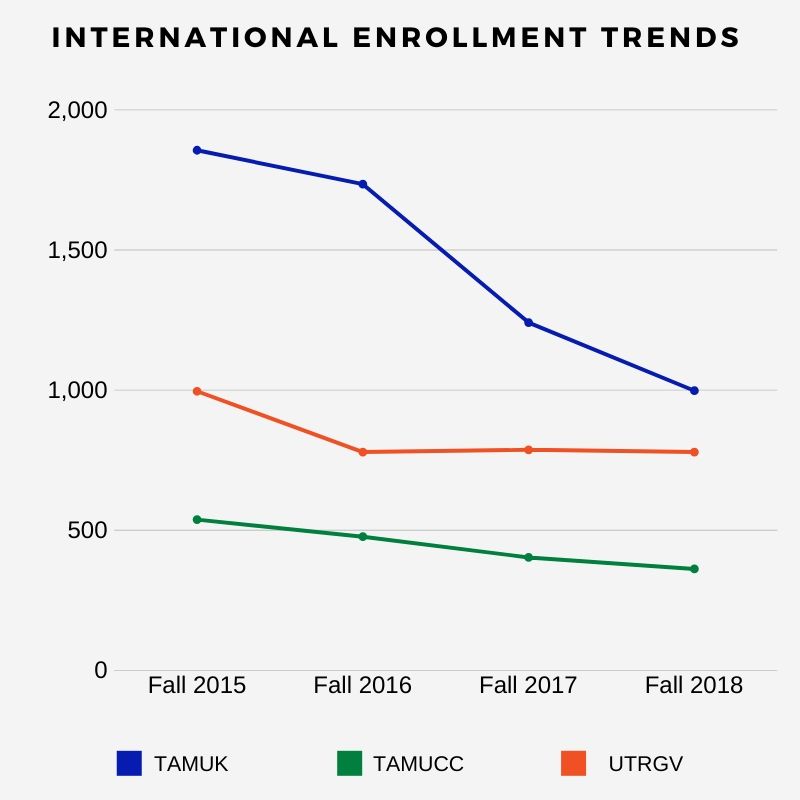As the drop in international enrollment continues, administrators and educational researchers at the Institute of International Education (IIE) are still unsure exactly how to make sense of the amalgam of factors that are perpetuating this trend.
Between the Spring 2016 and Spring 2019 semesters, there has been a 46 percent decrease for students enrolled in master’s programs at TAMUK.
This decline accounts for the majority of TAMUK’s enrollment loss, as undergraduate numbers have stayed fairly steady.
The College of Engineering has seen a 63 percent loss in enrollment for their master’s program in the same time period, which is a direct result of the decline in international students.
“The decline in international student enrollment in the College of Engineering is occurring primarily at the graduate level. Other institutions are also seeing decline in international student enrollment,” said Mohammed Alam Ph D, dean of the College of Engineering. “It is hard to predict actual factors. For example, some students have mentioned that there appears to be less job opportunities in the USA while other countries (such as Canada, Australia, China, etc.) are encouraging and providing incentives to attract international students for their universities.”
The international loss is not isolated to TAMUK. Universities across the nation are experiencing this trend.
For instance, Texas A&M University-Corpus Christi saw a 35 percent drop in international enrollment between the Fall 2014 and Fall 2018 semesters. The University of Texas Rio Grande Valley saw an initial drop of 19 percent in international enrollment from Fall 2015 to Fall 2016, but has remained steady through Fall 2018.
An increasingly competitive global marketplace seems to be one of the leading factors in the decline of international enrollment in higher education.
President of the IIE Allan Goodman echoed a similar sentiment regarding the overall decline in international students across the nation.
“It’ll always be a very, very mixed picture, and the international education consumer is always concerned about access, diversity, quality, cost, safety, but in the past couple of years for me the biggest new development is that there are real competitor countries out there that we’ve never had before,” Goodman said in a joint press call with the State Department and IIE.
With international students going to competitors, TAMUK is forced to recruit students from local and regional areas.
The College of Engineering is now looking to build their enrollment back up by targeting domestic students.
“We continue to intensify recruitment efforts at all levels. Currently, we are focusing more towards recruiting domestic students from the local and regional areas. We are also implementing a five-year BS+MS program as well as online courses/programs in order to attract more domestic students in the graduate programs,” Alam said.

